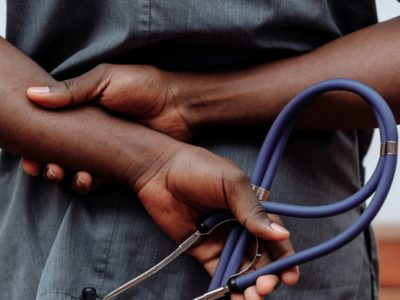On Monday, U.S. health officials lowered the quarantine limit for Americans infected with the coronavirus from 10 days to 5 days and also shortened the time it takes to quarantine close contacts.
The CDC said the guidelines are consistent with growing evidence that people infected with the coronavirus are most contagious two days before and three days after symptoms appear.
The change was prompted by a recent surge in COVID-19 cases caused by omicron variants.
Early research suggests that Omicron may cause milder disease than previous versions of the coronavirus. But with huge numbers of people infected and forced to quarantine, it could limit the ability of hospitals, airlines and other businesses to close, experts say. CDC Director Rochelle Walenski said there would be a lot of omicron infections in the country.
“Not all of those cases are going to be severe. In fact many are going to be asymptomatic,” she told The Associated Press on Monday. “We want to make sure there is a mechanism by which we can safely continue to keep society functioning while following the science.”
Last week, the FDA loosened a rule that previously required health workers not to work for 10 days if they test positive. According to the new guidelines, workers can return to work after 7 days if they test negative and have no symptoms. And the agency said the quarantine time could be reduced to five days, and even further if there is a serious manpower shortage.
Now, the CDC is changing the isolation and quarantine guidance for the general public to be even less stringent.
The guidance is not a mandate; it’s a recommendation to employers and state and local officials. Last week, New York state said it would expand on the CDC’s guidance for healthcare workers to include employees who have other critical jobs that are facing a severe staffing shortage.
Isolation Guidelines:
The isolation rules affect people who are infected. They are the same for people who are unvaccinated, partly vaccinated, fully vaccinated, or boosted.
- The clock starts the day you test positive.
- An infected person should go into isolation for five days, instead of the previously recommended 10.
- At the end of five days, if you have no symptoms, you can return to normal activities but must wear a mask everywhere — even at home around others — for at least five more days.
- If you still have symptoms after isolating for five days, stay home until you feel better and then start your five days of wearing a mask at all times.
Quarantine Guidelines:
The quarantine rules are for people who were in close contact with an infected person but not infected themselves.
- The clock starts the day someone is alerted to they may have been exposed to the virus.
- Only people who got booster shots can skip quarantine if they wear masks in all settings for at least 10 days.
- People who got their initial shots but not boosters are in the same situation as those who are partly vaccinated or are not vaccinated at all: They can stop quarantine after five days if they wear masks in all settings for five days afterward.

















